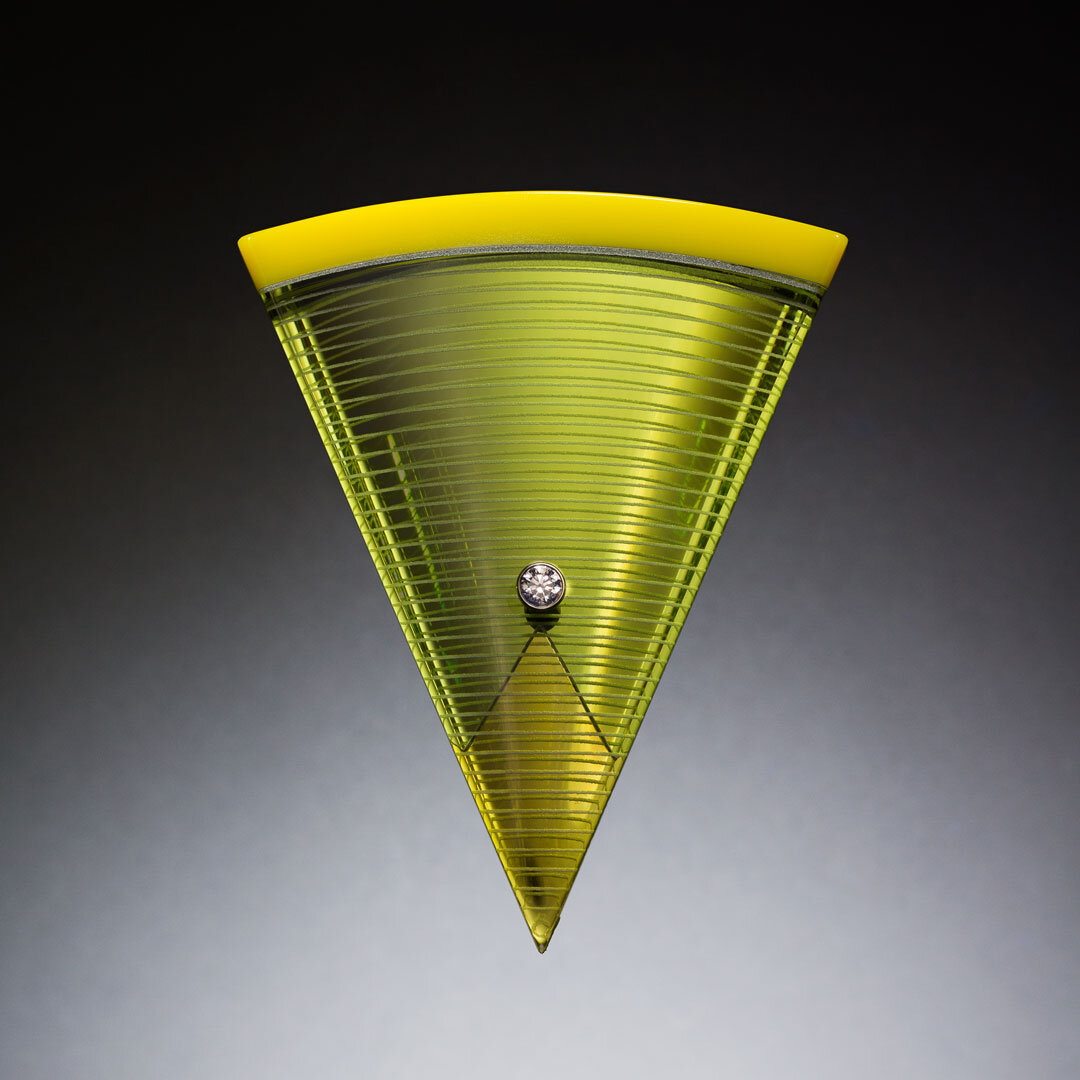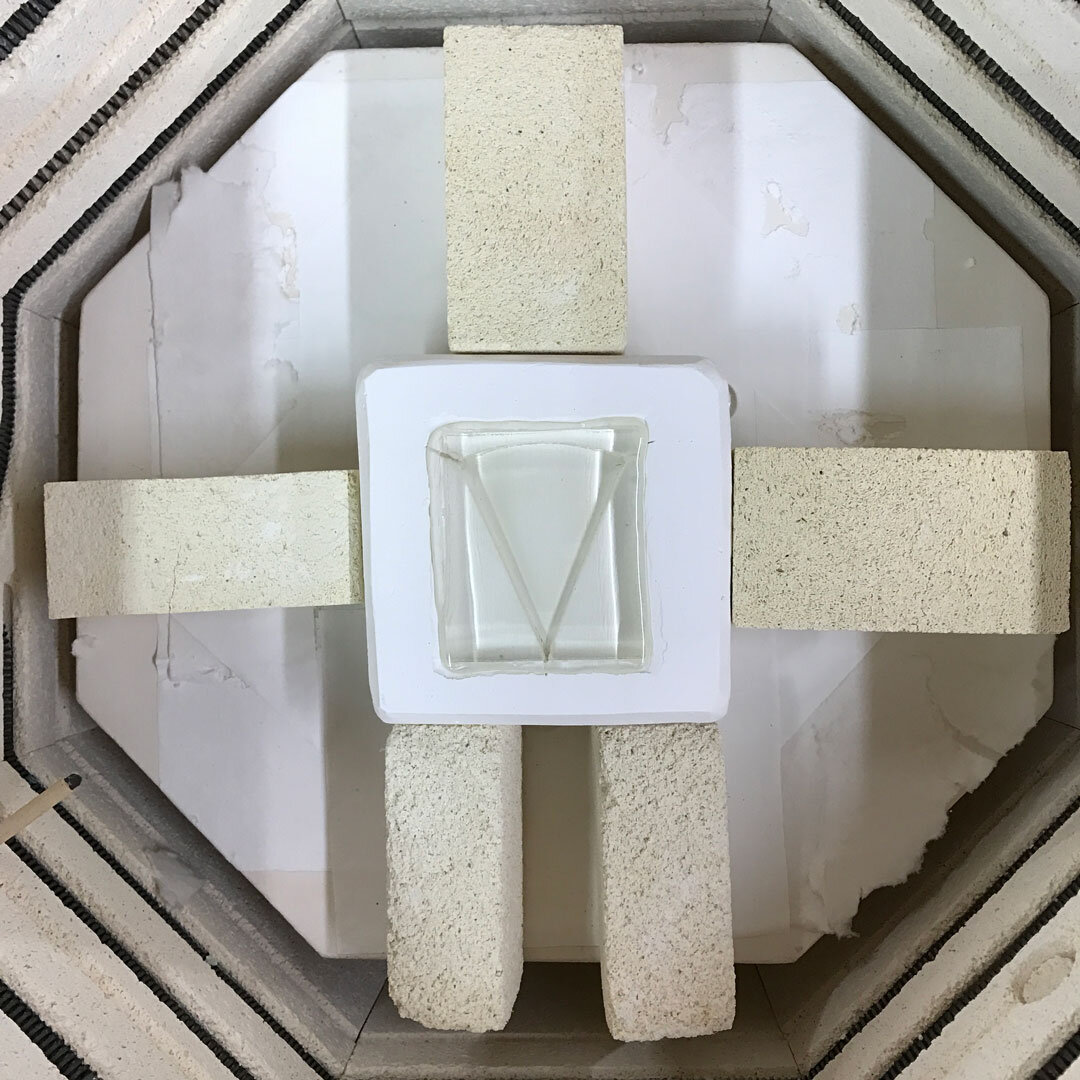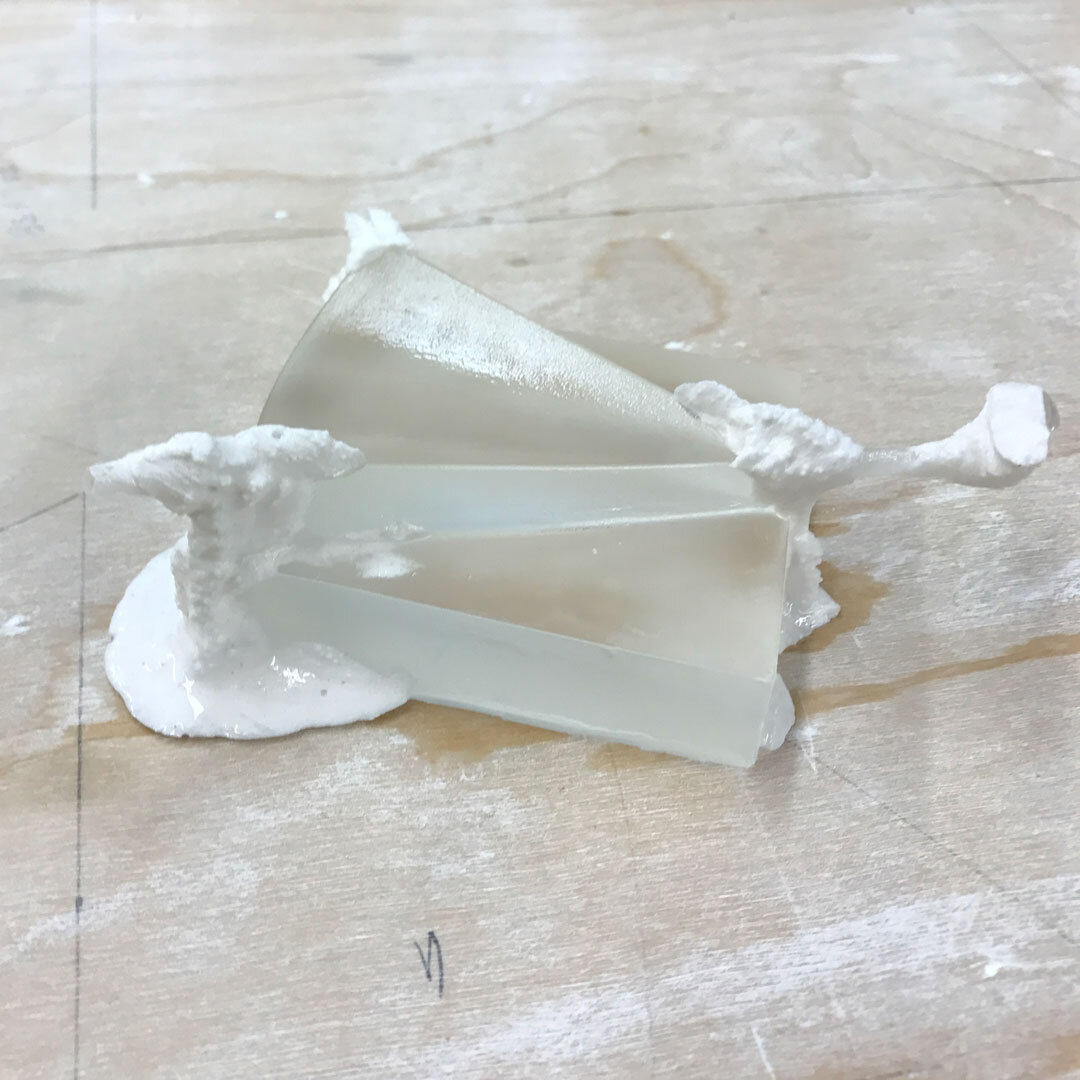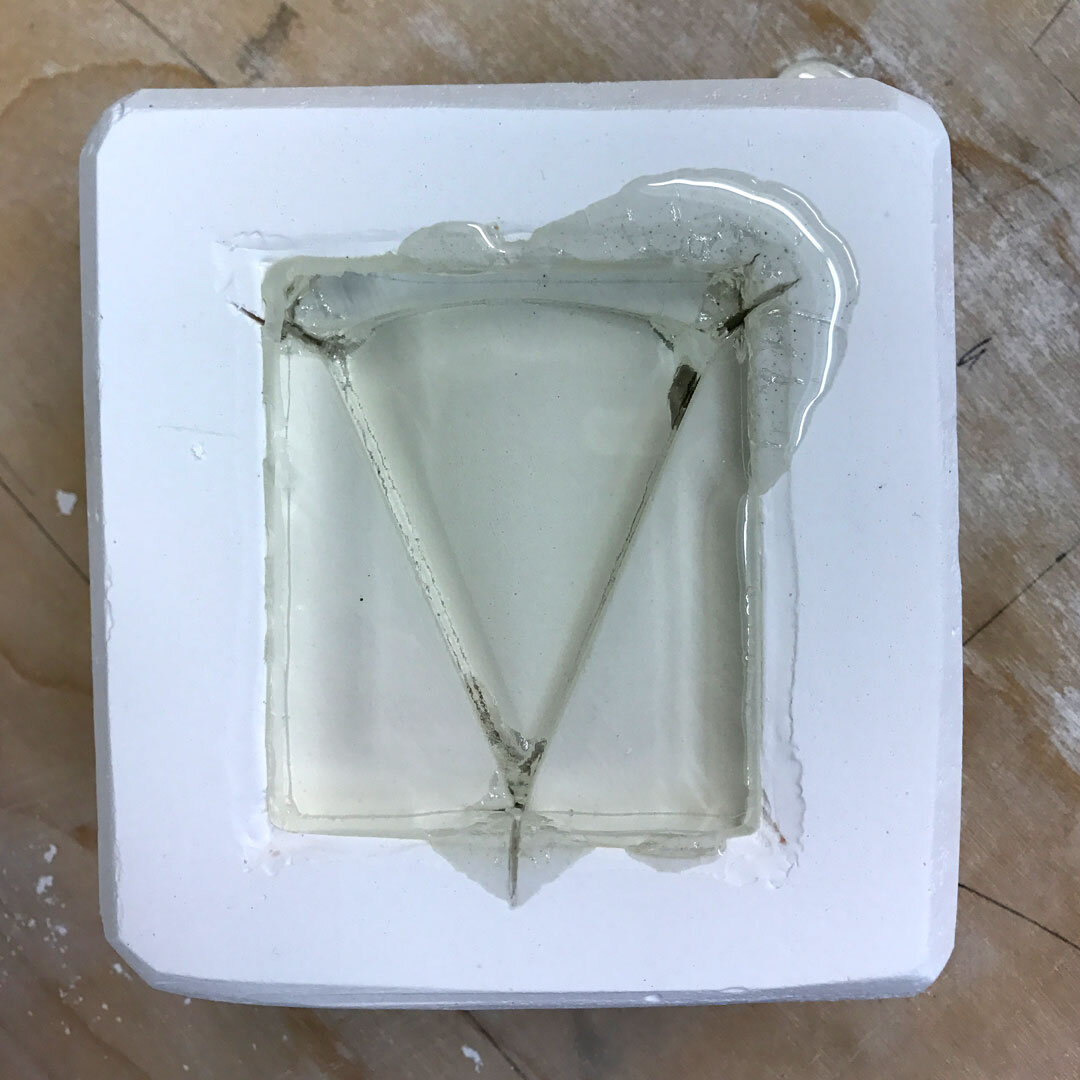Q: In your work you create each and every form - from the collar or the links to the distinctive jewels themselves. What are some of the processes you use to create form?
MACNEIL: My Primavera necklace is a good example of casting. I used casting with rubber molds for both the gold links and the setting for the diamond detail as well as for creating the glass jewels.
Drawing for Primavera necklace.
Linda MacNeil Floral Series No.98, Primavera, 2016. Saul Bell Design Award Winner 2020
Q: What process do you choose to create your most pristine jewels?
MACNEIL: Pure and Clear Solid Mass Glass, Kiln Cast with No Bubbles.
This type of “perfect clarity” glass jewel begins its life as a block. Blocks are first purchased from an industrial glass manufacturer and then pre-polished before kiln casting. Pre-polishing is necessary to remove any impurities. Once in the kiln, the block is heated and melted into a plaster mold of an original form that I have designed. After it cools and hardens it is polished again.
The block size must be determined in advance so that the volume of the glass will melt to fill the negative void in the plaster mold perfectly. The temperature of the kiln must be calculated at just the correct temp to have successful glass flow and maintain the clarity of the glass.
The end result is a unique, pristine jewel.




Linda MacNeil Waterford Ram’s Horn Necklace, 1999
Liinda MacNeil Brooch Series No. 81, Harmony, 1981. Gemological Institute of America collection.
Linda MacNeil Floral Series No.85, 2009, “Bouquet”




